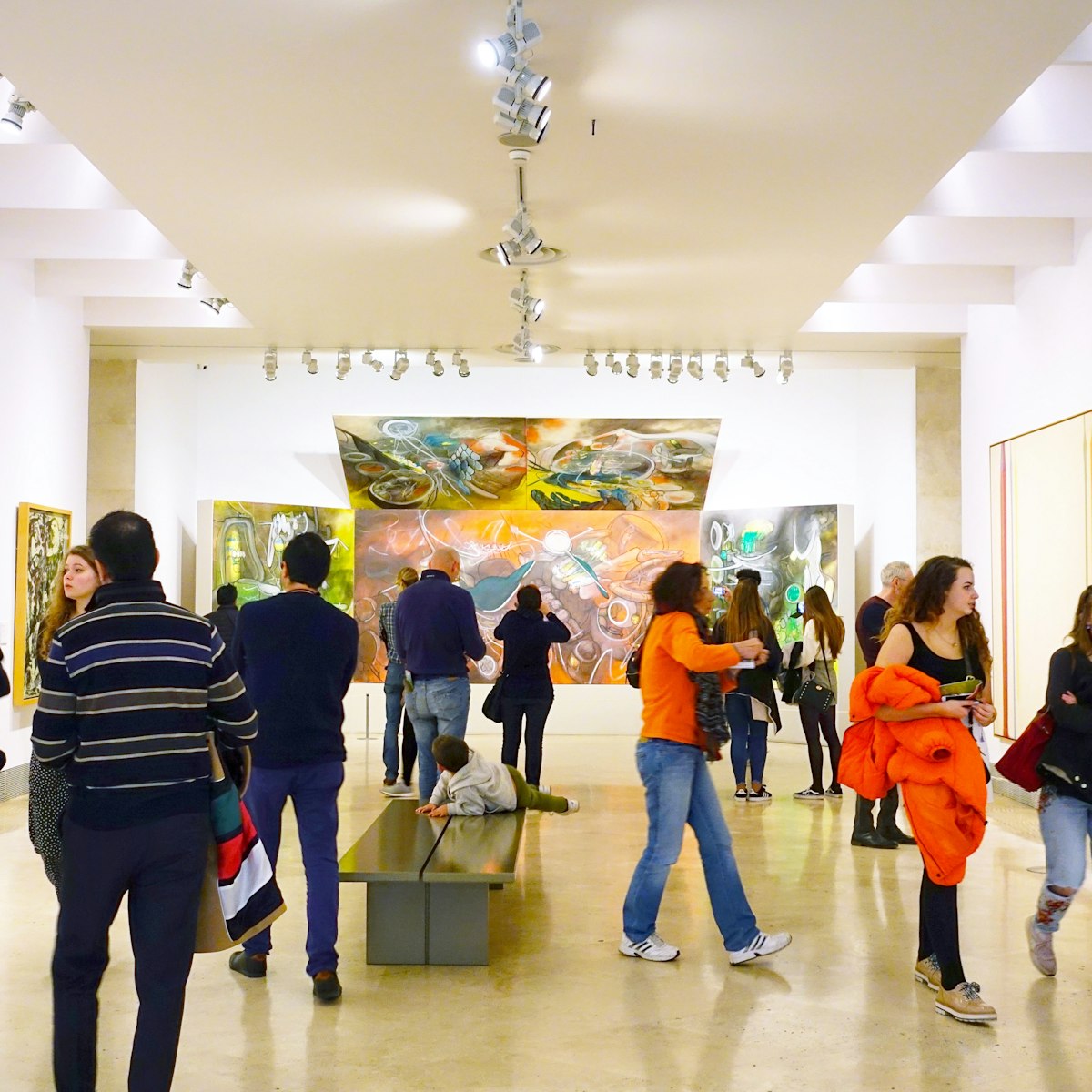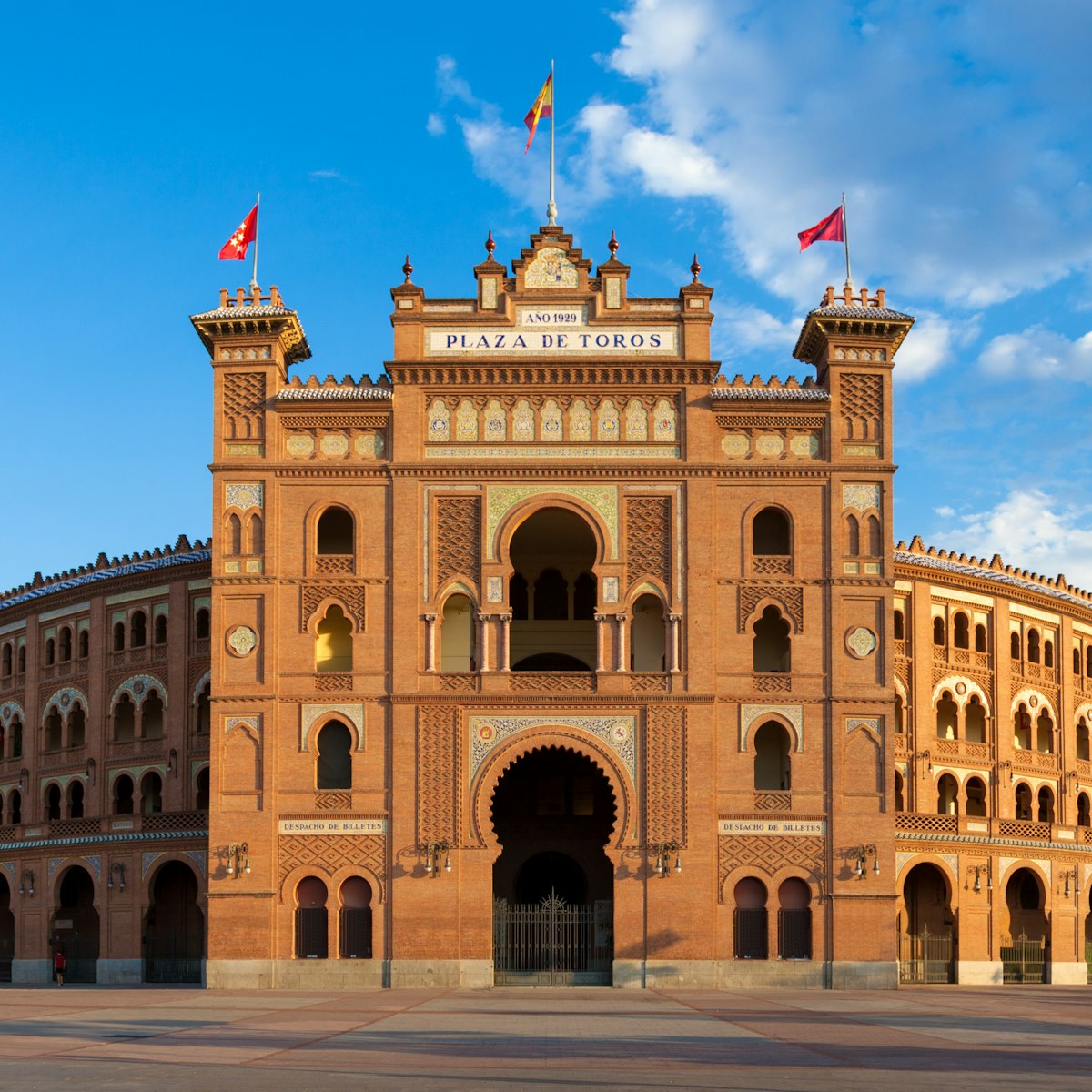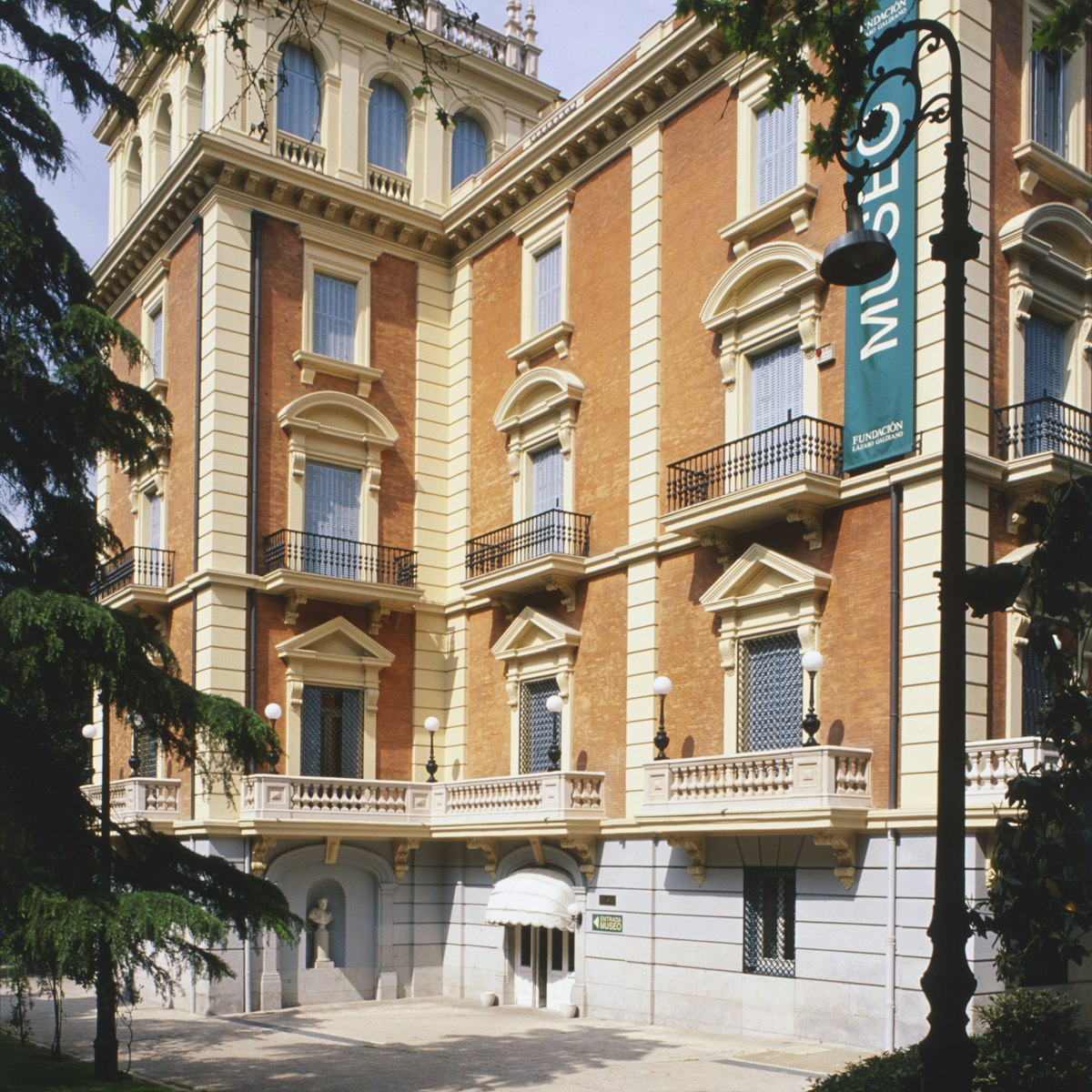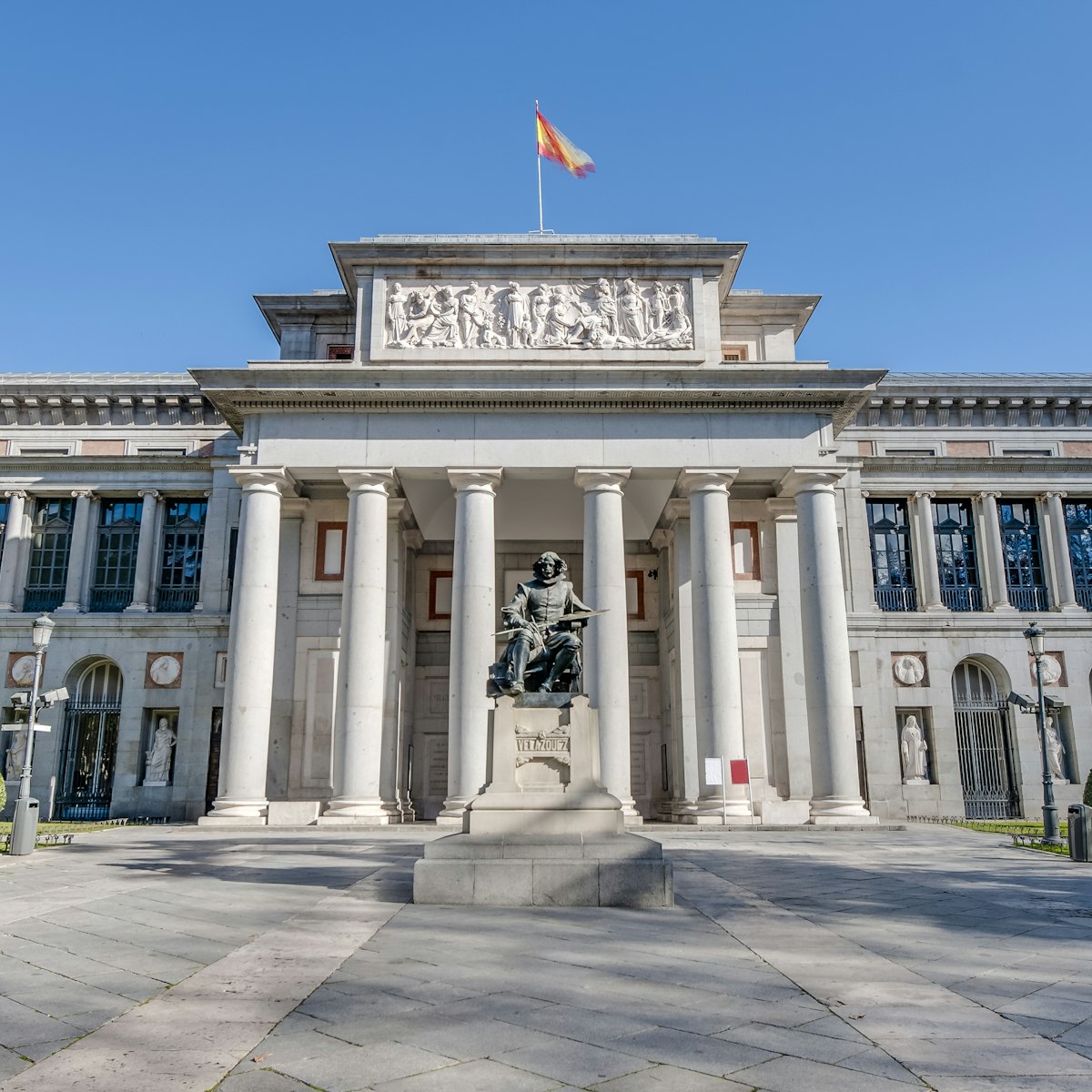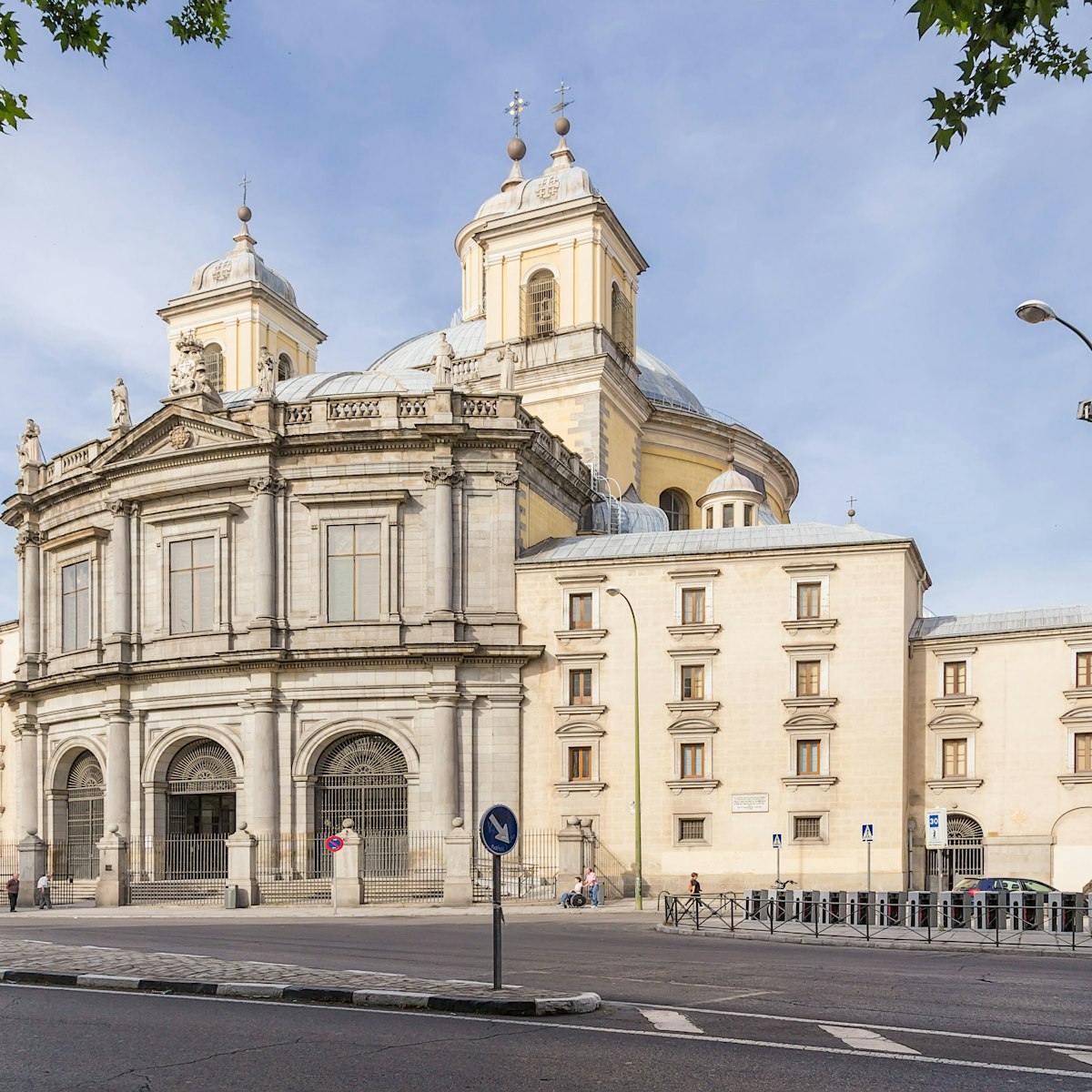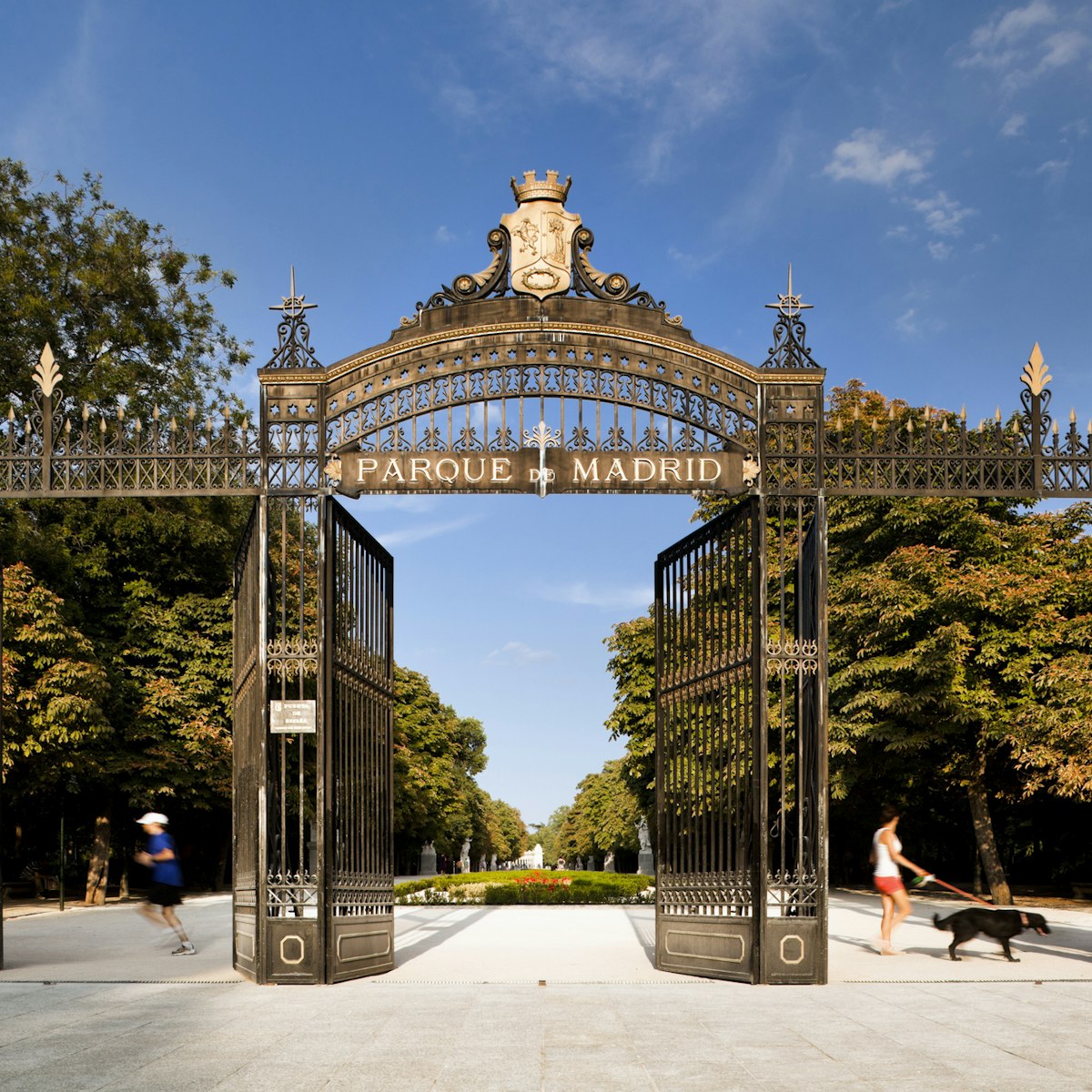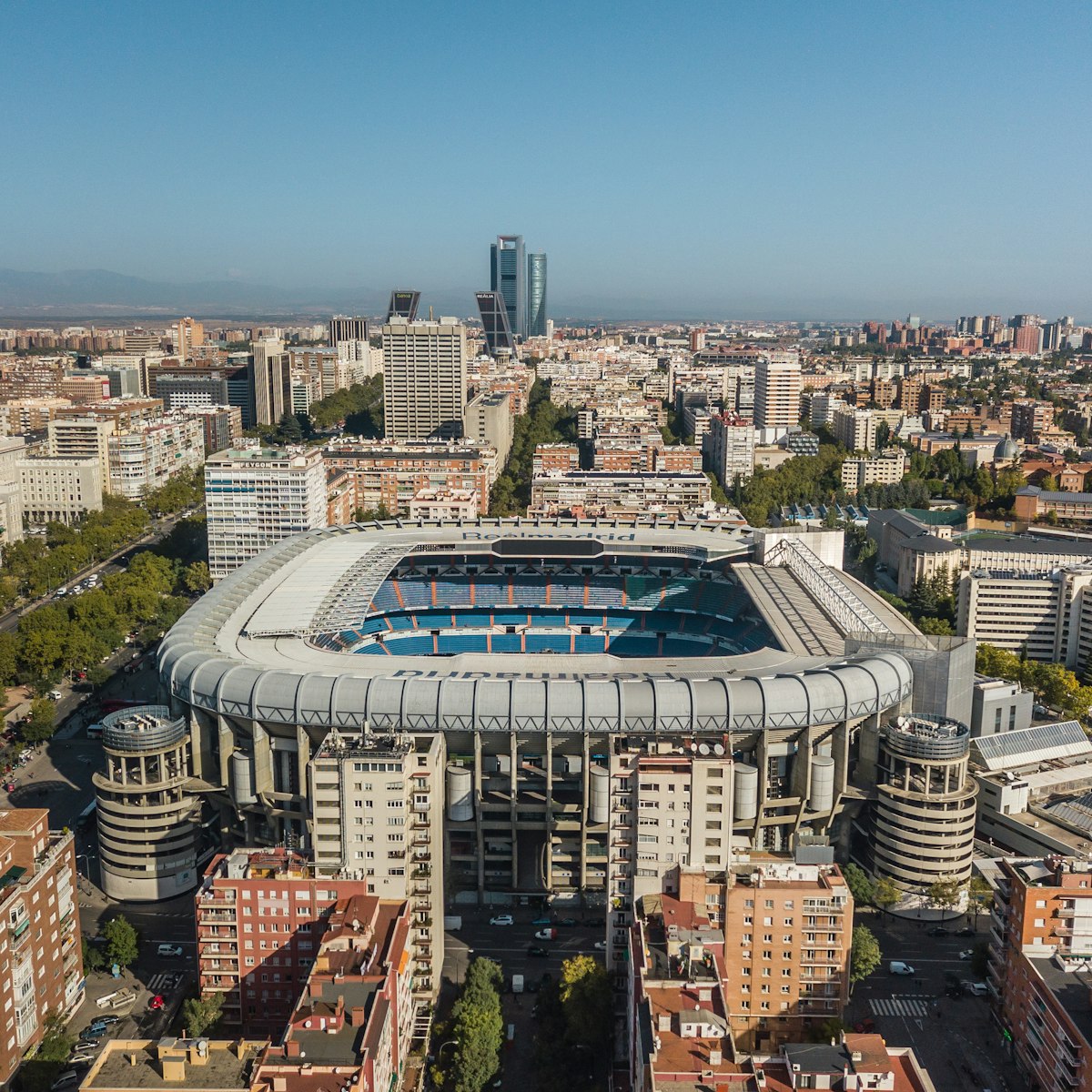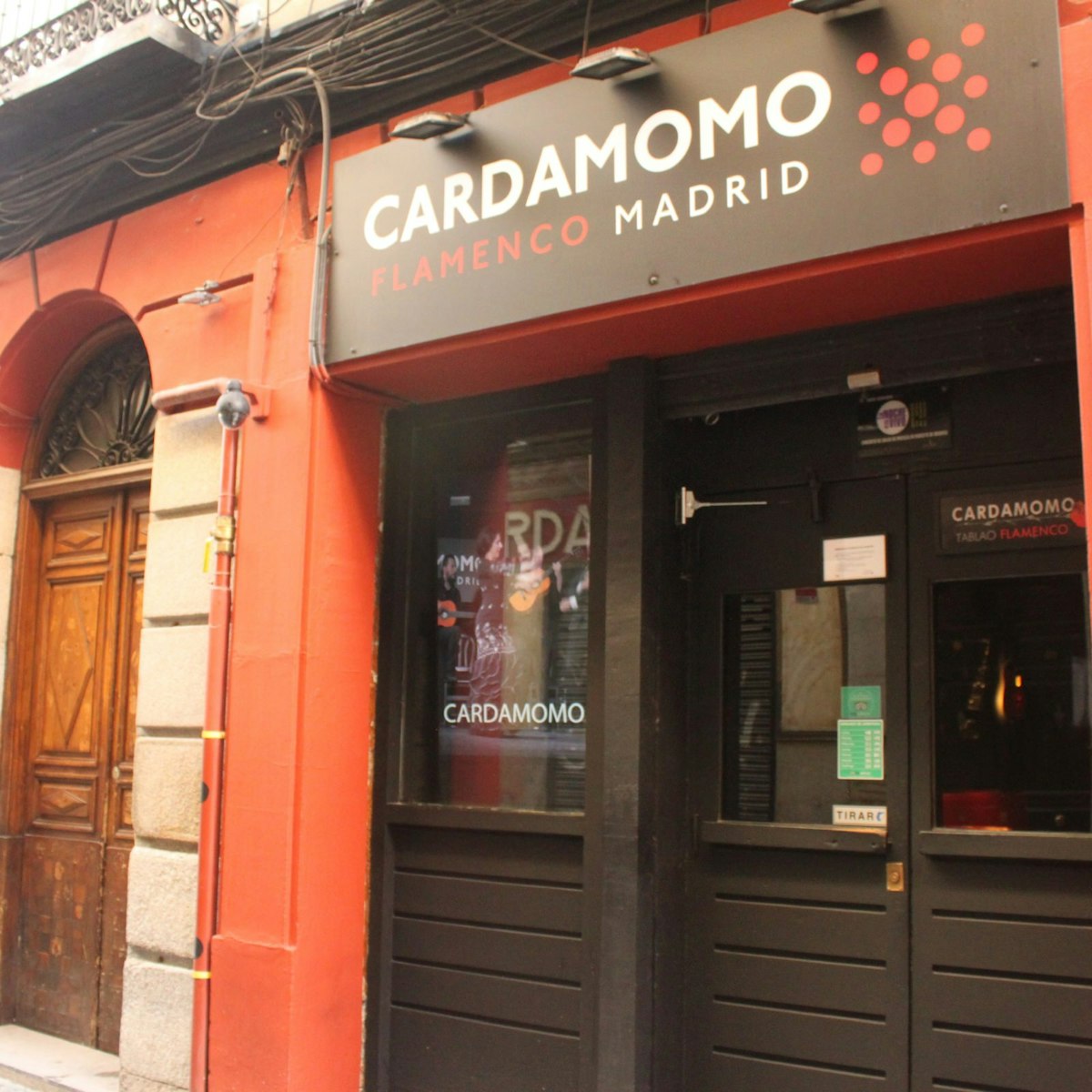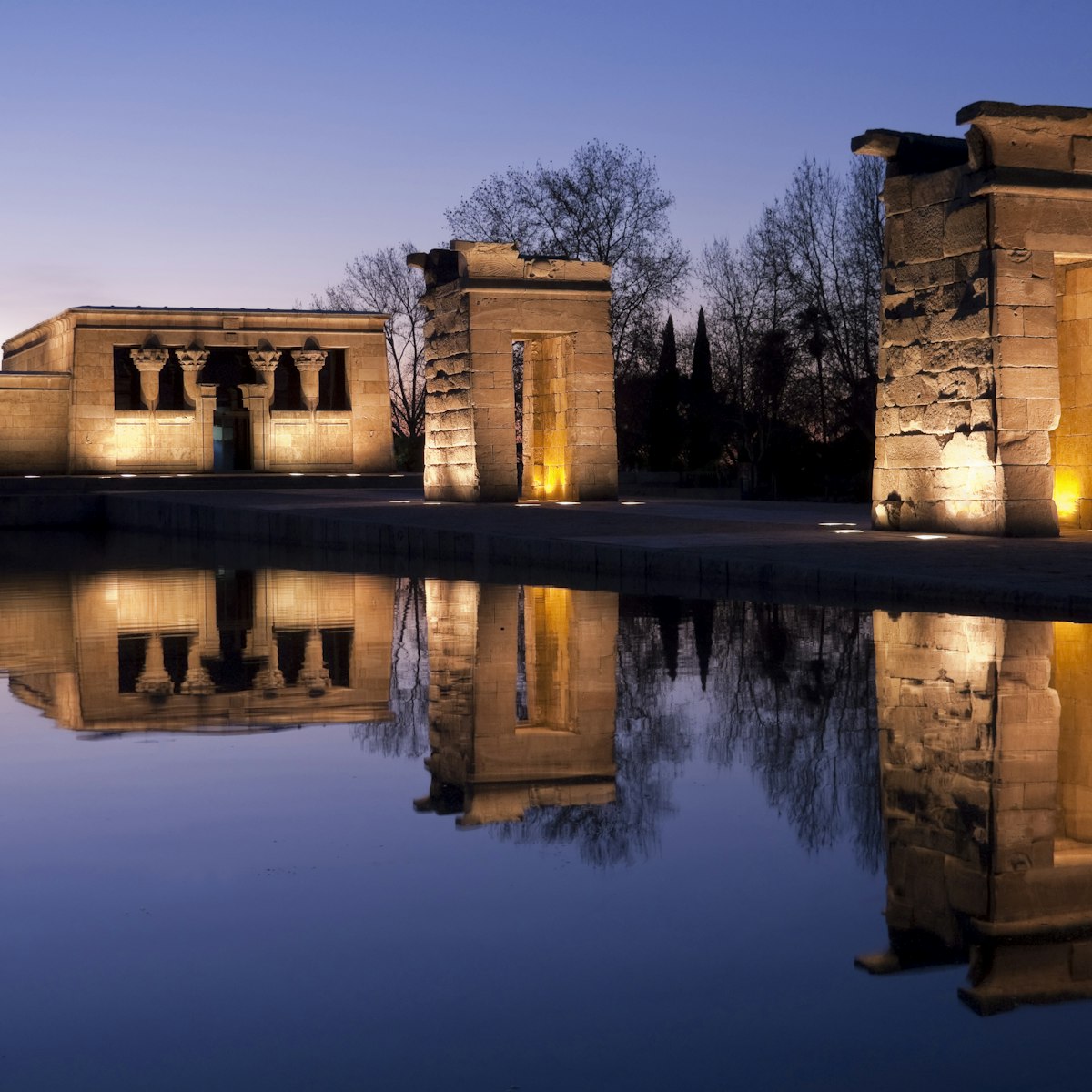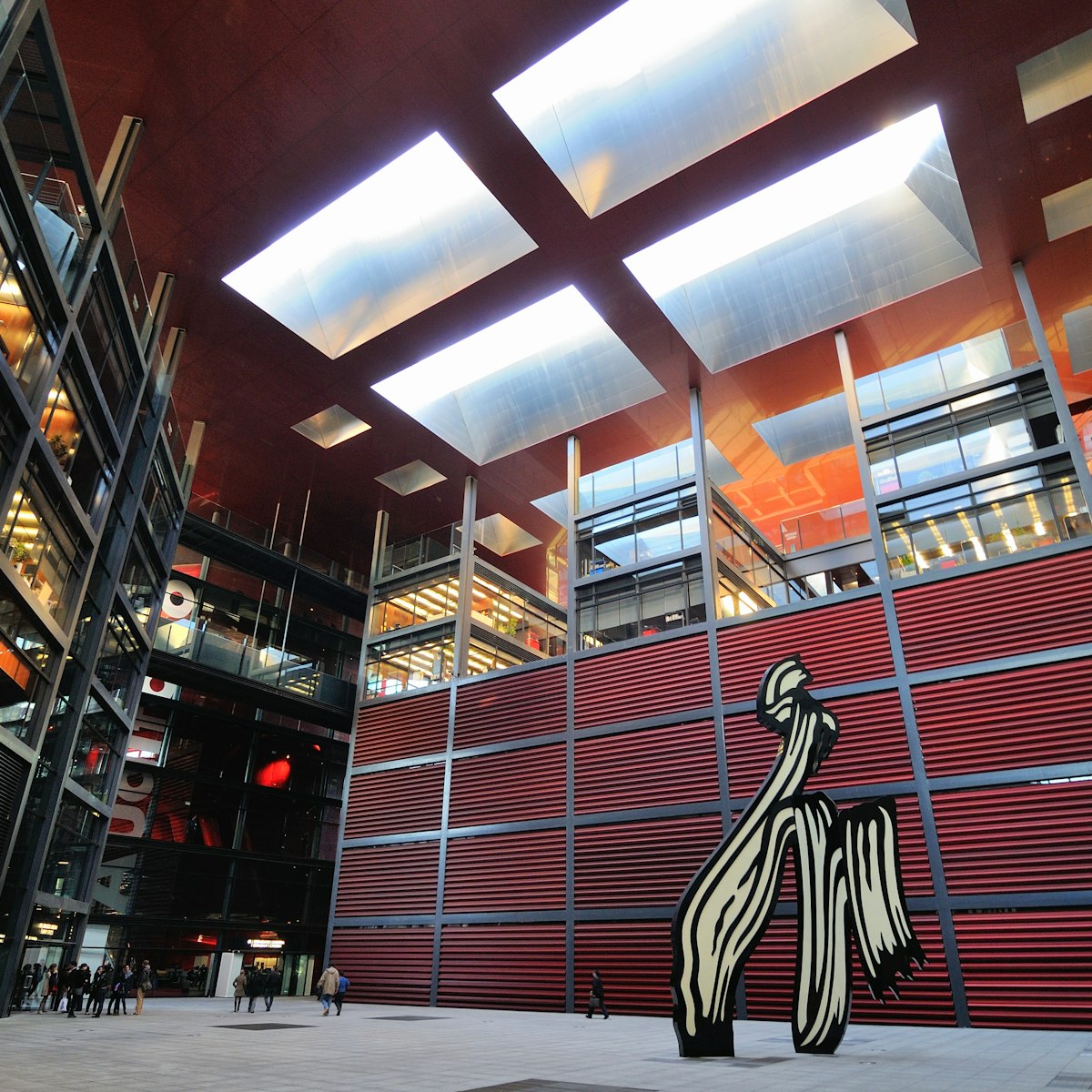
Part of Madrid’s golden triangle of art museums, The Reina Sofia is home to a huge collection of modern art. Focussing on Spanish works, the star attraction is indisputably Guernica.
A harrowing reflection on the atrocities committed during Spain’s Civil War, Picasso’s masterpiece still stuns crowds to this day. It’s a gigantic canvas that sits at the heart of a larger narrative, with artworks telling the often turbulent story of 20th-century Spain. Key figures in this story are, of course, Salvador Dalí, Joan Miró, and Pablo Picasso. However, the museum also has a smaller selection of works by non-Spanish artists including Man Ray, Francis Bacon and George Grosz.
The building itself is attractive, if somewhat imposing with the main collection located in the grand Edificio Sabatini just off from the Paseo del Prado. Bolted onto the back is the Edificio Nuevo, an extension that will delight fans of modern architecture. Housing a library, museum shop, and cafe, this shiny blood-red structure reaches out over a central courtyard to the older building, dramatically framing Roy Lichtenstein’s Brushstroke sculpture. Whichever side you approach from, most visits kick off with Guernica. If this is your plan, take the lift up to the 2nd floor and follow the signs to room 205.
Insider tip
The roof of Edificio Nuevo provides protection from the sun and the rain, so it’s best to queue for tickets on this side on hot or rainy days.
How much time do you need to visit Centro de Arte Reina Sofía?
If you have 30 minutes
Head straight for Guernica in room 205.10 on the second floor. The painting is a depiction of a brutal bombing raid on the Basque town of Gernika carried out by German and Italian airforces supporting the Nationalist side. Painted for the 1937 Paris World’s Fair, Picasso captures the horror of the moment, sounding a warning of atrocities to come during World War II.
Here, you’ll also find Picasso’s preliminary sketches and paintings. Details of the gored horse, weeping woman and dead baby further ram home the powerful anti-war message and attest to Picasso’s startling creative output: this work was produced in under six weeks.
However, Picasso himself has become a troubling figure to many of late with his treatment of women now coming under the spotlight. With this in mind, you may want to check out a painting in nearby room 205.06 by a female contemporary, which proves that genius was never the exclusive preserve of male artists. Another huge canvas, Un Mundo (A World) was produced by Ángeles Santos at the tender age of 17, stunning the Spanish art world when it appeared in 1929. With angels and stars shooting off a warped square-shaped earth, it's an intriguing composition that, like any great artwork, invites audiences to ponder its true meaning.
If you have 1.5 hours
Before dashing straight to see Guernica, spend some time checking out the rooms leading up to it. Squared away in room 204.01 is the museum’s collection of cubist works by artists such as Georges Braque, Juan Gris and Pablo Picasso, while rooms 205.15 explore the weird and wonderful world of surrealism with stunning works by Salvador Dalí, Joan Miró, René Magritte and Max Ernst.
Visitors should note that the work of Dalí, Picasso and Miró is scattered about the museum, so you’ll have to consult the website and search for their names to hunt down more of their oeuvre. However, if you do stay on the second floor, all three feature prominently. Particularly worth seeking out are Dalí’s Invisible Man in room 206.03, Miró’s Man with a Pipe in room 206.02, and Picasso’s striking early work, Woman in Blue in room 201.2.

Even the outdoor courtyards are exhibition spaces at the Centro de Arte Reina Sofia © Richard Nebesky / Lonely Planet
If you have half a day
The Reina Sofia is not only about paintings and sculptures, part of its mission is to document the cultural backdrop against which these works were made, with displays of documentary photographs, posters, and publications. Much of this deals with the impact of the Civil War on Spanish society and runs chronologically. Staying on the second floor in room 208.02 you can see the roots of the conflict, while near Guernica, a colorful wall of propaganda posters produced during the war (room 205.5) brings the era vividly back to life.
Heading upstairs to the quieter fourth floor, visitors can discover more about post-war Spain. Works by lesser-known Spanish artists worth seeking out include Joan Ponç’s playful Composició (room 400.05), Pancho Cossío’s beautiful yet unnerving Portrait of Ramiro de Ledesma (room 400.01) and Francisco Nieva’s avant-guard Postism (room 400.04). The art of South American creators is also featured on this floor and, while the museum sadly lacks any work by Frida Kahlo, it does have some excellent pieces by her husband Diego Rivera in room 405.
History
Despite being a modern art museum, the Reina Sofia has a dark history surrounding it. Originally a hospital in the 18th century, the building stood empty from 1961 until it opened its doors to the public in 1990. In the same year, during renovation work on the old chapel, the mummified remains of three nuns were found in the hospital chapel. Since then, all kinds of rumors have circulated about the site being haunted – understandable if you find yourself walking alone down a stone staircase that echoes with the sound of your footsteps and other eery noises.
Tickets and other practicalities
Entry costs €12 for one day or €18 if you want to spread your trip out over two days. Visitors can attend a free guided tour in English or Spanish to help them get their bearings (30 mins) or to find out more about Guernica (90 mins). The museum is free to visit on a Sunday between 12:30pm and 2:30pm and all other days between 7pm and 9pm, though visitors should note that it’s closed on Tuesdays.
It can be difficult to navigate as paper guides were scrapped because of the pandemic. To get your bearings, download a map of the building or look at the floor plans on the walls. Unfortunately, there is little indication of what works are in which rooms, so if you’re after something in particular, you need to search for the appropriate room number on the website before referring to the floor plan.
 Publish for free
Publish for free

 zzdtravel
zzdtravel




